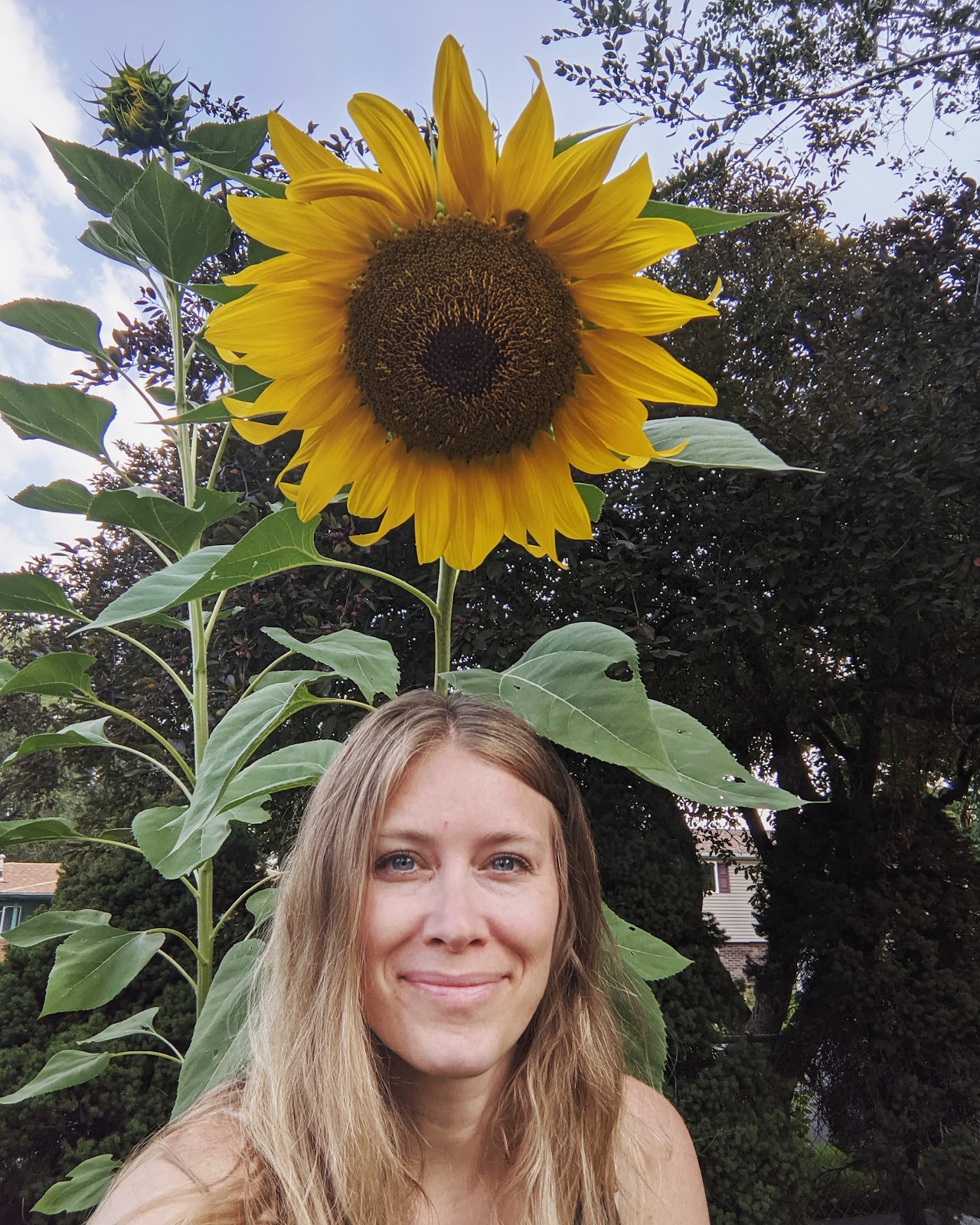One of the rockstars of my garden the past few years has been a perennial flowering vine known as Nelly Moser Clematis. It's winter hardy, and blooms vigorously in late spring when the weather is still cool, followed by a second blooming period in the fall. The pale pinkish-lavender flowers are 4-8" in diameter, and really light up the patio garden in the spring when everything is still waking up slowly.
Once the petals start to fade, the flower center turns into a fuzzy puff ball that gradually puffs out as the summer progresses. They provide interest to the lighter green leafy vines in the summertime, and then slightly smaller flowers appear in the fall.
I purchased my clematis on a whim a few years ago, and the first year it lived on my patio, I thought it was dead. It had finished its spring blooming period shortly after I bought it, and I almost dug it up at the end of the summer and threw it away, because it didn't look like it was alive.
Thank goodness I didn't toss it, because once spring rolled around, and I went out to get rid of it, I saw lots of leaf buds forming and decided to just give it a month or two to see what it did. It grew fast and furiously, and nearly tripled in size the first spring.
The second spring it doubled in size, and kept growing all summer. Each spring it has been covered in incredible flower displays, and it's been one of the most pleasant surprises on my patio garden. It lives in a large 20" pot, with a trellis to climb, and I water it a few times a week to make sure it never dries out. I cover the root area with lots of mulch to keep it cool, and surround it with other pots to shade the soil. It's been very happy in its pot since the summer of 2014, and I hope it continues its long life as one of my favorite items in my garden!
I highly recommend you grow this beautiful vine for yourself.
GROWING NELLY MOSER CLEMATIS
Name: Clematis
Type: Vine
Hardiness Zone: 4 to 8
Height: 6-10 feet
Spread: 6-10 feet (if not trellised)
Bloom Time: May to June, and then again in fall.
Color: Pale pink flowers with subtly darker middle stripe
Sun: Full sun to part shade (prefers colder feet and sunny tops)
Water Needs: Moderate
Gardening Skill-Level: Low
GROWING TIPS
Grow clematis in well-draining soil and keep moderately wet. It doesn't like droughts, but doesn't need a swamp. It's happiest in locations where its head is in the full to part sun and its feet are in the shade. In places that get really hot in summer, it will be much happier with a little afternoon shade. This works well on my patio, since it gets so hot, I put it on the east side of a west-facing wall. After about 3pm, it starts getting light shade while the rest of the garden bakes in the sun. Clematis is a vining plant, so it will need a trellis or some kind of support to climb.
Tip: To shade the roots, plant with smaller plants around the base. Mulching around the roots is also a great way to keep the soil from drying out, and help cool down the clematis' feet. Don't let it dry out too much.
FUN CLEMATIS FACTS
There are over 250 species of clematis, and most are climbing vines that get woody like the Nelly Moser. They are native to a wide variety of places in the world including Europe, North America, Australia, China, and Central America.
PRUNING YOUR CLEMATIS
Clematis can benefit from pruning, but I don't prune mine. It blooms on old and new wood so I'm always a little hesitant to cut anything off and miss out on the show in the spring. However, if you are looking to prune, clematis are separated into three pruning groups. Nelly Moser is in Group 2.
Pruning Group 1: Blooms on old wood. This would be all growth from previous years. Prune after spring flowering. This allows the plant to continue growing all summer and you'll still have old wood for next year's flowering.
Pruning Group 2: Blooms on old and new wood. You really shouldn't do much pruning on this type of clematis since it gets a wood-like stem. If you do happen to cut it to the ground, or prune it, flowering will be reduced and/or delayed, but it will come back eventually.
Pruning Group 3: Blooms only on new wood. You can cut it down to the ground every year in either fall or spring.
POTENTIAL PROBLEMS WITH CLEMATIS
They don't really have too many pests or diseases, but they can have issues with stem rot, powdery mildew, rust and viruses. Clematis can also sometimes have aphids, vine weevils, slugs, spider mites and earwigs.
On my hotter-than-hot patio for the past 3 years, I have yet to have any issues other than making sure it gets enough water.
Clematis are beautiful, showy, additions to any garden and look great whether they're rambling through the garden as ground cover or climbing up a wall, fence, any other structure. You will definitely not be disappointed by bringing one of these beauties home!












Join the conversation!
Thanks for stopping by The Joy Blog! I hope you like what you have seen so far. Feel free to share your thoughts or questions in the comments. I try to respond to almost every single comment.